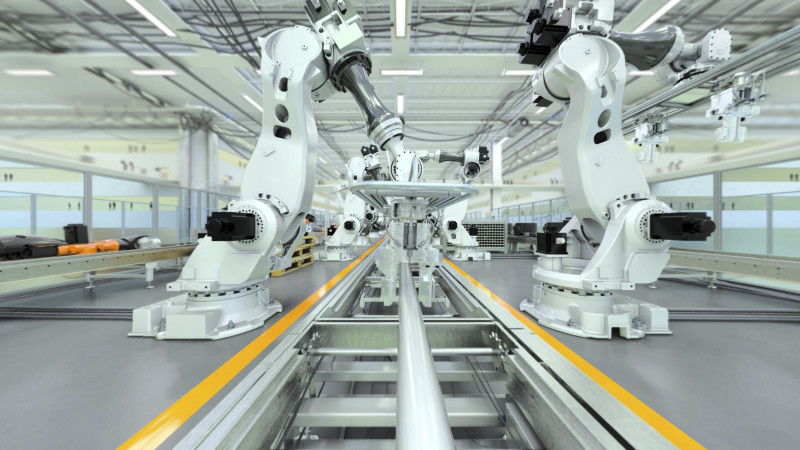Automation Technology: Friend or Foe? Embracing the Change Together

Automation, using technology to commit tasks traditionally done by humans, has been slowly creeping into our lives for centuries. From humble beginnings in ancient workshops to the dizzying heights of artificial intelligence, its journey has been a fascinating one, shaping the world we live in today. So, let’s take a trip through time and witness the rise of the machines:
Ancient Beginnings:
The seeds of automation were sown as early as 3000 BC in Mesopotamia, where water clocks used the flow of water to measure time. In ancient Greece, Heron of Alexandria invented the world’s first automatic steam-powered device, a toy theatre that opened doors and played music when a fire was lit. These early inventions, while essential, applied the groundwork for future advancements.

The Industrial Revolution’s Engines:
The 18th century is shown in the Industrial Revolution, marked by mechanization and the rise of factories. Power looms, turning jennies and steam engines replaced manual labor in textile production, drastically increasing efficiency. These early “machines” weren’t robots as we know them, but they marked a significant shift towards automation.
Assembly Lines and Robots Take Center Stage:
The 20th century saw the rise of assembly lines and the birth of the modern robot. In 1913, Henry Ford’s revolutionary moving assembly line in his Model T factory epitomized the concept of automated mass production. Meanwhile, in 1954, the world’s first industrial robot, the Unimate, was installed in a General Motors factory, marking the beginning of an era of robotic automation.
The Computer Revolution and Beyond:
The latter half of the 20th century saw the rise of computers, which ushered in a new era of automation. From numerically controlled machines in factories to automated teller machines in banks, computers were changing the game. Today, with the advent of artificial intelligence and machine learning, automation is reaching new heights. From self-driving cars to automated surgery, robots can now perform complex tasks with increasing autonomy.
Reskilling and Upskilling: Adapting to the New Work Landscape
The world of work is changing at a dizzying pace. Automation, globalization, and technological advancements are creating new jobs and transforming existing ones. This dynamic landscape necessitates continuous learning and adaptation for individuals to stay ahead of the curve. The answer lies in reskilling and upskilling, twin concepts that empower individuals to thrive in the evolving work environment.
What’s the Difference?
Reskilling: Involves acquiring entirely new skills and knowledge to transition into a different career path or role. This could mean shifting from a traditional brick-and-mortar job to a digital one or moving from one industry to another.
Upskilling: Focuses on enhancing and refining existing skills to excel in your current role or prepare for advancement within your field. This might involve learning new software, mastering advanced techniques, or deepening your understanding of industry trends.

Why Reskill and Upskill?
The benefits of embracing continuous learning are numerous:
Enhanced Employability:
Reskilling and upskilling make you a more versatile and attractive candidate in the job market. You expand your skill set, making you adaptable to various opportunities and increasing your chances of landing your dream job.
Job Security:
In a rapidly changing landscape, those with outdated skills face a higher risk of job displacement. By staying relevant and acquiring in-demand skills, you future-proof your career and enhance your job security.
Higher Earning Potential:
Upskilling often leads to increased productivity and efficiency, making you a valuable asset to your employer. This can translate into higher salaries, promotions, and better career prospects.
Personal Growth: The process of learning is inherently rewarding. Reskilling and upskilling challenge you intellectually, boost your confidence, and open doors to new opportunities for personal and professional growth.
How to Embrace Continuous Learning:
The good news is that there are numerous avenues for reskilling and upskilling:
- Formal Education: Universities, colleges, and vocational institutes offer various courses, certifications, and degree programs tailored to specific skills and industries.
- Online Learning Platforms: A plethora of online platforms like Coursera, Udemy, and LinkedIn Learning provide on-demand courses, tutorials, and learning paths on a wide range of topics.
- Bootcamps: Intensive short-term programs focus on specific skills and provide hands-on learning experiences, often leading to job placement assistance.
- Mentorship and Coaching: Seek guidance from experienced professionals in your field who can share their knowledge and provide valuable insights.
- Networking: Attend industry events, conferences, and workshops to connect with like-minded individuals, stay updated on trends, and discover new learning opportunities.
Remember: Reskilling and upskilling are not one-time events, but ongoing journeys. Embrace a growth mindset, be curious about new technologies and trends, and continuously seek opportunities to learn and develop your skills.

FAQs (Frequently Asked Questions)
1. What exactly is automation technology?
Automation technology encompasses any tools or systems that perform tasks automatically, with minimal or no human input. This can range from simple things like automatic sprinklers watering your lawn to complex robots assembling cars on a factory floor.
2. What are the benefits of automation?
Automation offers a multitude of benefits, including:
- Increased Efficiency and Productivity: Machines can work tirelessly and perform tasks much faster than humans, leading to significant productivity gains.
- Improved Accuracy and Quality: Automation reduces human error and ensures consistent quality in production and service delivery.
- Enhanced Safety: Automated systems can take over dangerous tasks, reducing workplace injuries and accidents.
- Lower Costs: Automation can streamline processes and reduce labor costs, leading to overall cost savings for businesses.
3. Will automation take away my job?
While automation is changing the work landscape, it’s not necessarily all doom and gloom. While certain jobs may become obsolete, new ones will emerge requiring different skill sets. The key is to be adaptable and embrace continuous learning to upskill and reskill for the jobs of the future.
4. What are the ethical concerns surrounding automation?
Automation raises various ethical concerns, such as:
- Job displacement: The potential for widespread job losses due to automation needs careful consideration and implementation of mitigation strategies.
- Bias and discrimination: Automation algorithms can perpetuate existing biases, leading to unfair outcomes. It’s crucial to ensure fairness and inclusivity in the development and implementation of automation technology.
- Privacy and security concerns: Automation systems collect and store data, raising concerns about privacy breaches and misuse. Robust data protection measures are essential.

5. How can we prepare for the future of automation?
Equipping individuals with the skills and knowledge needed for the jobs of the future is crucial. Encouraging a culture of continuous learning and adaptability will be essential for individuals to thrive in the changing landscape. Ethical guidelines and regulations are needed to ensure the responsible development and use of AI and automation technologies. Open dialogue and collaboration between policymakers, businesses, and individuals are vital for shaping a future where automation benefits everyone.
Conclusion:
Automation has shaped our environment for ages, from simple water clocks to complex robotics. This cutting-edge technology promises better efficiency, production, and safety, but it also raises questions about job displacement and ethical ramifications. The goal is to safely exploit its potential through continual learning and adaptation, strong ethical frameworks, and open collaboration.
As we negotiate the changing world of automation, keep in mind that it is not about robots replacing humans, but about humans and machines cooperating to create a better future for all. We can ensure that automation becomes a force for good, empowering individuals and driving progress in every part of our globe, by embracing lifelong learning, supporting inclusion, and assuring responsible growth.

